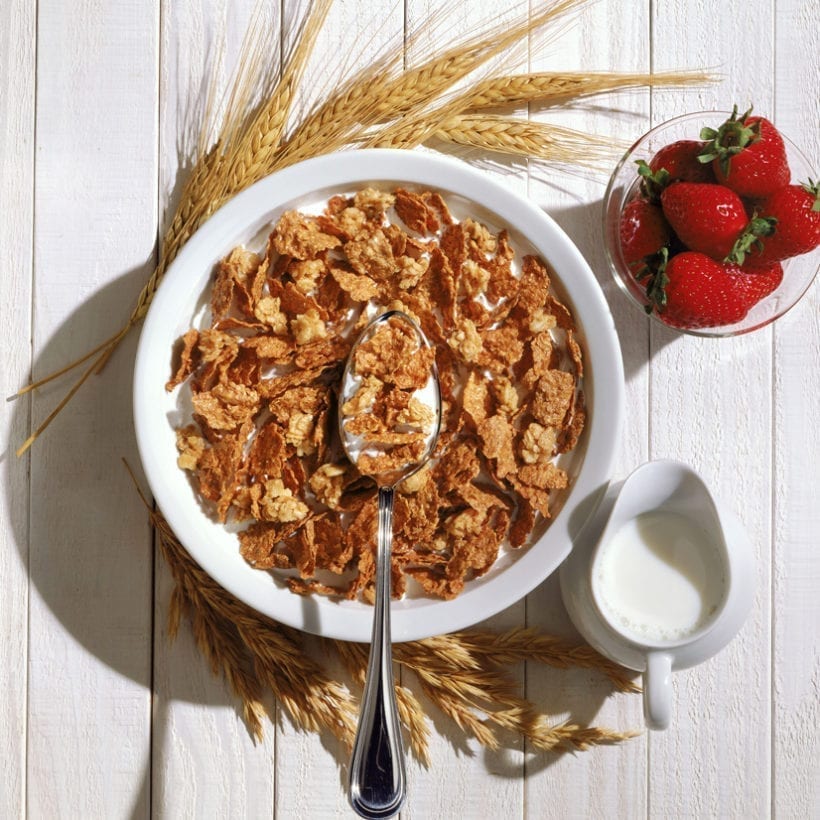There are 14 weeks left in 2019. But in those 14 weeks left, there is still time to meet your 2019 health goals. If you need an aspiration to keep your habits strong through the stress of the holiday season and the countdown to 2020, try setting these benchmarks. As experts reassure, with dedication and persistence, any feat is possible:
Retrain your breathing habits
The next time you are in a stressful situation, pay attention to how you breathe. If you are like most people, you likely hold your breath or take short, stinted inhales and exhales, instead of filling your lungs fully. Joan Varini, a yoga instructor, holistic healer and author says few people give attention to their breath, even though it fuels our every moment. “Retraining ourselves how to breathe properly is the first step in a critical self-care practice. Once you learn how to slow down and deepen your breath when you are relaxed and tap into the natural relation response in the body, this becomes a more natural go-to in times of stress,” she explains.
How to do it: Varini suggests starting with micro-goals that you increase each week. Your goal should be to have ten minutes per day of inhaling for 10 counts and exhaling for 10 counts. You may feel fidgety in the beginning, but as you increase one minute each week, you will grow more comfortable and most importantly, feel calmer. It may also be helpful to change your scenery — maybe you try the exercise before bed one week, then the next you sit outside and feel the fresh air on your face.
Increase how much time you move each day
Even if you work out the recommended 150 minutes weekly by The Mayo Clinic, chances are high you also spend quite a bit of time sitting. This is largely due to a traditional 9 to 5 schedule for most professionals that has them glued to a computer screen or a conference room for the majority of their workdays. According to fitness expert Evie Fatz, moving more can make a huge impact on our overall health as spending more time walking or even standing up can improve your metabolism and circulation.

How to do it: Your goal should be to add a solid 20 additional minutes of movement by the end of the year. Take baby steps — no pun intended — toward this by finding opportunities in your schedule. Fatz says this could be getting up five minutes earlier and taking the time to stretch or go through a yoga sequence. It could also be parking further away from the grocery store when you drive or getting off a stop earlier if you take public transportation. You can also take your 1:1 catch-up with your boss or assistant by going for a walk around the block. Or, if you want to really make a huge change, she suggests asking for a standing desk from human resources. “An adjustable desk will allow you to stand up as you choose and reduce the negative side effects of sitting,” she adds.
Quit your soda habit
If you are still drinking a Diet Coke daily, you may not realize how negatively it is impacting your health — not only today but in the future, too. Soda is linked to poor liver function in women, increases the risk of type 2 diabetes, and majorly dehydrates you with a single can. Even so, plenty of people — even those who consider themselves wellness-minded — can’t kick the habit. Author and fitness transformation coach Jerry Snider says weening yourself off pop is a manageable goal to meet by the end of the year. It just takes a little practice — and retraining your diet.
How to do it: Since soda is something you reach for to quench your thirst, Snider says you must re-train your cravings toward water instead. Start by having one full eight-ounce glass of water every time you have a soda. Snider says you will quickly feel fuller, and you won’t be as likely to reach for another can. Gradually, cut back on how much soda you are having as you increase your water intake. When you start to feel tempted, find your ‘why.’ “Make a list of why water is better than soda for your body and focus on those positive outcomes that water provides,” he suggests.
Improve your hip flexibility
Regardless if you are more a yogi, a boxer, an indoor-cycling junkie or a CrossFit fanatic, most people struggle with tight hips. Even though this part of our body helps to keep us upright, to walk and to run, movements that challenge flexibility below the waist can be difficult. Health expert and founder of Splendid Spoon Nicole Centeno says many people put extra pressure — and stress! — on their lower back when their hips aren’t limber enough. Instead, we can use the remainder of the year to make more space for our hips to twist and turn.
How to do it: Centeno suggests swapping your office chair for an exercise ball a few minutes a day in the beginning. At first, it will be tough and uncomfortable, but as you increase how long you sit on it, you will grow more comfortable. “You’ll not only increase the flexibility of those hips, but you’ll also notice a much firmer middle section,” she explains. Your goal should be to sit on the ball for at least one hour of your workday by the time the New Year’s ball drops.
Be proactive about your health
And by that, Seema Sarin, M.D., an internal medicine doctor for EHE Health, means booking appointments with your medical team. “By getting the proper health checkups and health tests or exams, you are actively taking part to make sure you live longer and healthier,” she explains. Since most health insurance plans include a visit to your primary care physician, your dentist, your eye doctor and to your OB-GYN, it is time to schedule your visit before the calendar page turns to January.
How to do it: Contact your insurance company or check-in with your human resources department on how you can best find doctors in your network. Sarin suggests doing an annual physical, a skin check, teeth cleaning and any other part of your body — from eyes to ears — that you want to monitor. An easy way to ensure follow-through with such little time before the new year is to sit down and schedule all of your appointments right now. “Space appointments out by a few days so you don’t get overburdened or overwhelmed,” she adds.
Eat more fiber
Nutritionist Monica Auslander Moreno, MS, RD.N says the vast majority of Americans barely get 10 grams of fiber daily, even though it is recommended to consume 25 to 35. This nutrient is essential to our diet since it keeps our bowel movements regular, lowers cholesterol levels and controls blood sugar, among other benefits. Without it, you may frequently get constipated or feel moody in between meals.
How to do it: First, Moreno suggests figuring out what your baseline fiber intake is by looking up the contents of what you typically have throughout the day. Then, add 3 to 4 grams per week through the end of the year. “Try adding a different high fiber fruit or vegetable each week. By the end of a month or two — you’ll be eating a rainbow of fiber,” she shares. Some fiber-rich goodies to start with include lentils, bananas, pears and almonds.
Run or jog a 5K
If this seems totally out of the question, think again! Even if you haven’t exercised in years, Snider says most people can run a 5K — that is 3.1 miles — in a few months. And while you may not be super fast or win a race, working toward a tangible goal makes it easier to plan your course of action and stick to walking, jogging or running schedule.
How to do it: Repeat after Snider: consistency is the name of this goal. He suggests signing up for a 5K in early January, so you have a specific date to look forward to and train for. Then, start small with quarter-mile runs that you increase every week. Don’t forget to take at least one rest day per week, and to take your time.
Streamline your digestion
According to Fatz, the number one factor in weight loss and disease prevention comes from a healthy gut biome. Our digestion impacts so many parts of our overall health, including our immune system and how quickly our body absorbs nutrients. “There is a delicate balance of bacteria in the gut, which plays a crucial role in avoiding disease, overcoming depression and overall reducing metabolic disorders, including obesity,” she explains. In a few months, you can ensure your gut is in the right place with a handful of seemingly small, but significant, changes.

How to do it: All too often, professionals choose to take lunch by their desk or ‘grab a quick bite’ for dinner instead of sitting down and enjoying the food. One way to ensure you aren’t speeding but savoring is to chew every last bite before you take another. Fatz also suggests drinking water between bites to keep your pace steady. You should also ask your doctor about a recommended probiotic that can improve your gut, as well as including fermented foods into your diet, like kombucha to sauerkraut.
We only recommend products we have independently researched, tested, and loved. If you purchase a product found through our links, Sunday Edit may earn an affiliate commission.









